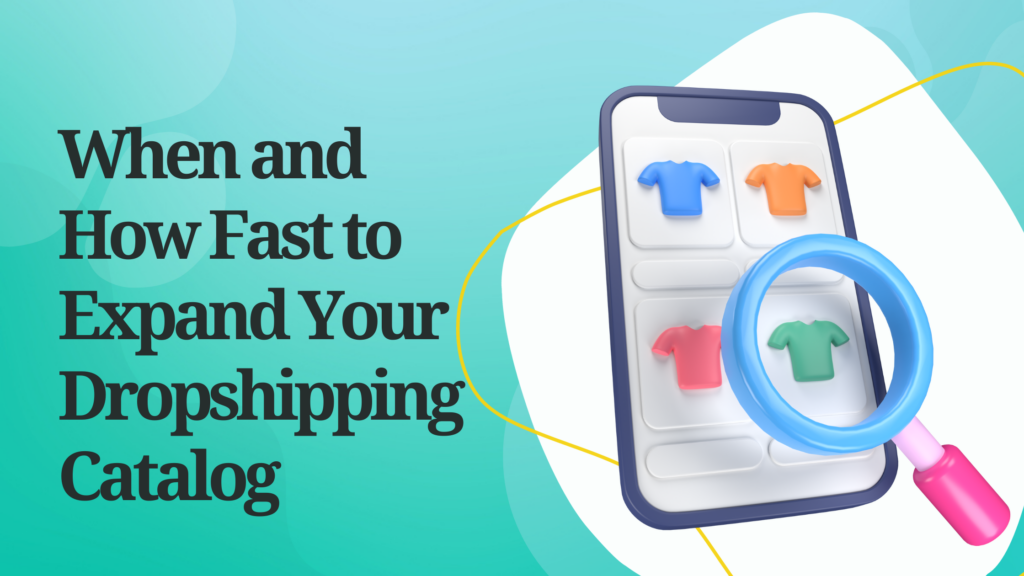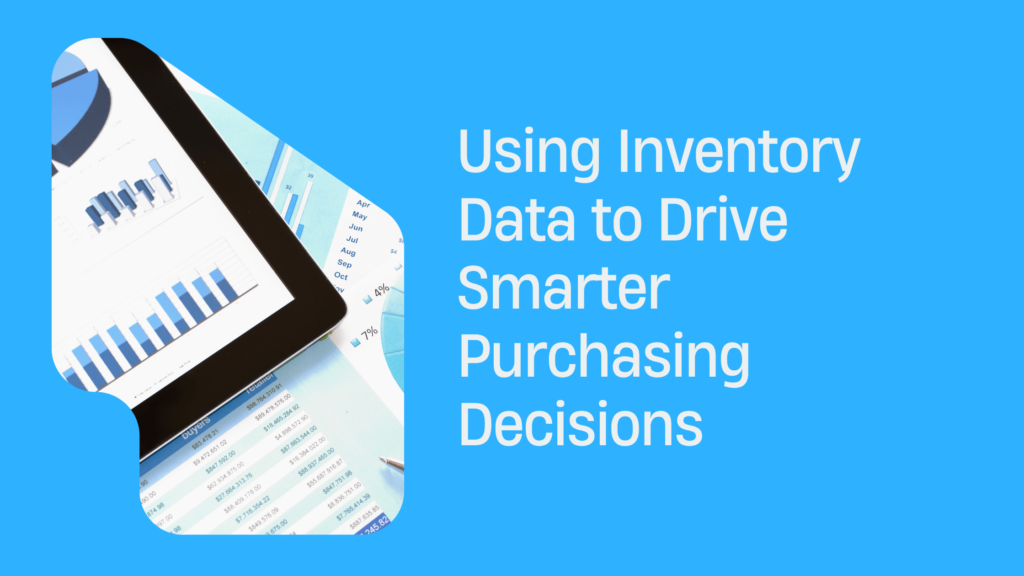When and How Fast to Expand Your Dropshipping Catalog
Before growing your dropshipping list, let’s get set up to expand the smart way.
You need a plan that provides value, not just more products.
We explain how to review your current setup, understand key metrics, and make your relationships with suppliers stronger-all to get your tech and plans ready for growth that continues.
Read on and learn how to improve your business, keeping your team small and your customers happy, as you create a better spot in the market.
Assessing Your Dropshipping Business Maturity
In the world of dropshipping, expanding your catalog is a big step.
But before starting this journey, you must review your business’s current state. You need to make sure that your operational framework can support the growth you picture.
Like a bridge built to handle a certain amount of traffic, your inventory systems and supplier networks must be strong enough to fit the increased flow of products and orders that come with a bigger catalog.
Evaluating Current Operations and Capacity
The backbone of your dropshipping business is your inventory management system. It needs to give accurate, current information.
Ask yourself: can your system track every product from when it’s listed to when it gets to the customer? More SKUs mean more complexity, and your system must keep up.
Although you don’t need space for stock, you do need to consider returns and exchanges. Will your current setup manage that extra volume?
Production abilities are equally important.
If your sales double overnight, will your suppliers be able to meet the demand without delay?
A solid relationship with your suppliers, based on past performance data, is key to grasping their reliability.
For fulfillment and shipping, you must identify any step in the process where delays happen.
A single bottleneck can slow down operations and lead to customer dissatisfaction.
By pointing out these bottlenecks, you can address them effectively, making sure a smooth flow of products to your customers.
Identifying Key Performance Indicators (KPIs)
Knowing your limits and abilities is just one part of the equation.
Setting realistic growth targets that align with your operations requires a deep dive into your business’s Key Performance Indicators (KPIs).
Profit margins, for instance, should show whether you’re financially healthy enough to support an expanded catalog.
Inventory turnover rates will show you how fast products are selling, and stockout rates will alert you to shortages that could signal unmet customer demand.
Sales data, customer acquisition costs, and lifetime value metrics are vital for tracking performance over time.
You’ll want to keep a close watch on these numbers to make sure your growth strategy is on track.
Market conditions are always shifting, and staying informed about trends, competitors, and consumer behavior is crucial for making informed decisions.
Using analytics dashboards gives you real-time visibility into these KPIs, which is invaluable for guiding your strategy. These tools enable you to respond quickly to changes, helping you to set growth targets that are ambitious yet realistic, based on hard data rather than guesswork.
By thoroughly assessing your current operations and being meticulous about KPIs, you’re not just expanding your catalog; you’re strategically positioning your business for sustainable growth in a competitive market.
The Role of Supplier Relations in Catalog Expansion
The strength and reliability of supplier relationships are critical for successfully expanding your product catalog.
When your catalog grows, the complexity of managing these relationships and ensuring product quality and delivery can increase.
It’s crucial to have a solid foundation with your suppliers to support this growth, much like ensuring the pillars of a building are strong enough for additional floors.
Selecting the Right Suppliers
Checking out suppliers involves a complete look at their history.
You need to review their past reliability, quality control, and ability to meet increased production demands over time.
To do this, check their past performance, confirm they can grow operations, and track their delivery timelines.
It’s also key to review the financial health of your suppliers.
Suppliers should give you their financial statements, allowing you to check for signs of stability and longevity.
A supplier’s openness about their business practices and their backup plans for potential issues shows their dedication to your partnership.
On-location checks are a direct way to confirm compliance with industry rules, make sure working conditions are safe and fair, and validate that quality management systems are in place. This step is about more than meeting requirements; it’s about guaranteeing the integrity of the products you sell.
Managing Multiple Supplier Relationships
Proactive management of supplier relationships is about maintaining clear visibility into your supply chain.
Regular interactions with suppliers help you stay informed about their inventory levels, potential material shortages, and production schedules.
This level of engagement helps you plan efficiently and respond swiftly to market changes.
For clear and efficient communication with suppliers, especially those in different regions, a centralized communication system is invaluable. Such a system can bring together emails, instant messages, and document sharing, reducing misunderstandings and delays.
Supporting a cooperative relationship with suppliers means sharing customer feedback with them. When customers share what they love or want to be improved about a product, passing along this information helps suppliers make tweaks that can improve their offerings.
And when it comes to supplier portfolios, balance is key.
Having a diverse mix of suppliers can help you manage costs and encourage innovation.
It also reduces the risk of over-dependence on any single supplier, which can be an issue if that supplier has problems.
Technological Enablement for Scalable Growth
To grow your dropshipping business effectively, technology is not just an option; it’s a necessity.
With a larger catalog comes the need for more sophisticated management of products and orders.
Automation is the key to handling this increased complexity without multiplying your workload. It allows for smooth, error-free operations, from updating inventory levels to processing orders.
Leveraging eCommerce Automation Tools
Automation’s role in catalog and order management is crucial.
It ensures that inventory levels across all your sales channels remain synchronized, reducing the risk of selling products that are no longer in stock.
Automated systems can process orders faster and with fewer errors, freeing your team to focus on growth and customer service.
Predictive analytics, powered by artificial intelligence, provide actionable insights into how your expanded range of products is likely to perform. This data-driven approach allows you to make informed decisions about which products to stock more of and which to phase out, based on their sales performance and customer demand patterns.
Integrating scripts and plugins into your e-commerce platform can speed up the process of adding new products to your catalog. This means that when you find a new product that aligns with your brand, you can have it listed and available for sale across all your channels in a fraction of the time it would take to do so manually.
Inventory Management Simplified
Centralized inventory management platforms offer a single, unified view of your stock levels in real time, regardless of where you sell your products. This means you can make quick adjustments to your inventory to meet changing demand, ensuring a positive experience for your customers.
Tailored demand planning is essential for managing each product effectively throughout its lifecycle. By taking into account factors such as seasonality and market trends, you can better predict and respond to shifts in customer demand, ensuring that you have the right amount of stock at the right time.
Inventory Source provides tools for seamless inventory synchronization and shipment tracking, critical for managing an expanded catalog. Their system updates your inventory levels automatically, eliminating the risk of overselling, and offers transparency into the shipment process, which is increasingly important as order volumes grow.
Moreover, custom reporting and analytics dashboards offer insights that are pivotal to making well-informed decisions about your catalog. These tools provide a clear view of which products are performing well, which channels are most profitable, and how changes to your catalog affect your bottom line.
Strategic Expansion: Adding SKUs with Purpose
Growing your dropshipping catalog is a deliberate process.
Each new product you include should serve a strategic function, aligning with your broader business goals and enhancing your brand’s appeal to customers.
This approach to expansion ensures that every addition to your product lineup is a calculated decision aimed at driving your business forward.
Curating Your Product Mix
To determine which products are a good fit for your brand, in-depth market research is essential.
This involves analyzing consumer behavior and preferences, as well as assessing the competitive landscape.
By understanding what your customers want and what your competitors offer, you can identify products that will not only meet demand but also set you apart in the marketplace.
A product roadmap is a strategic document that outlines the introduction of new products over a 12-24 month period.
This roadmap should align with your company’s growth strategies and include a schedule for when to introduce new products.
This disciplined approach allows for careful planning and ensures that each new product builds upon the last, maintaining a cohesive brand identity.
When exploring potential products, it’s important to consider opportunities for adjacent offerings – products that complement your existing catalog without straying from your core focus. For example, if you sell fitness equipment, adding nutrition supplements could be a logical extension that provides additional value to your customers.
Ensuring that new products align with your brand identity and customer value proposition is crucial. Each product should reinforce what your customers already appreciate about your brand, whether it’s quality, innovation, or a particular lifestyle association.
Timing Your Catalog Expansion
The timing of your product launches can significantly impact their success. A launch calendar that takes into account seasonal sales trends, industry events, and potential collaborations can help you maximize the reach and impact of each new product introduction.
It’s important to allow at least a six-month lead time for the introduction of new products.
This gives you ample time to source materials, oversee production, and develop effective marketing campaigns.
For instance, if you plan to introduce a new line of seasonal clothing, starting the sourcing process well in advance ensures that your products are ready for the peak buying season.
Before committing to a full-scale launch, consider conducting iterative testing with a small batch of products.
This allows you to collect customer feedback and make any necessary improvements.
Only after validating that the product meets your customers’ needs and expectations should you proceed with a wider release.
Marketing and Customer Experience Considerations
As your dropshipping catalog grows, it’s essential to ensure that every new product addition is supported by a strong marketing and customer experience strategy.
The introduction of new SKUs should be seen as an opportunity not just to expand your range but also to deepen engagement with your customer base.
Thoughtful marketing and consistent customer experiences are integral to keeping the trust and interest of your audience.
Aligning Catalog Expansion with Marketing Strategies
When you introduce new products, it’s important to roll out coordinated marketing campaigns across all your digital and physical media channels.
Each channel should present a consistent message that informs and excites customers about your latest offerings.
The goal is to create a seamless narrative that customers can follow, whether they’re scrolling through social media, reading an email, or browsing your website.
Optimized content is key to showcasing your new products effectively.
This includes product descriptions, images, and other marketing materials that highlight the features and benefits of your new offerings.
Personalized recommendations are also a powerful tool. By analyzing past purchase behavior, you can provide customers with suggestions that are relevant to their interests, which not only enhances their shopping experience but can also increase the average order value.
Cross-sell and upsell opportunities should be planned to add value to the customer’s purchase rather than simply increase sales.
This means identifying products that naturally complement each other and presenting them at the right time in the customer journey.
For example, offering a protective case when a customer purchases a new phone or suggesting a compatible lens when they buy a camera.
Ensuring that your expanded product portfolio aligns with your brand messaging is crucial.
Every new product should reflect the values and promises your brand stands for, whether that’s quality, affordability, or innovation.
This synergy helps to maintain the trust and loyalty of your customers.
Keeping a Pulse on Customer Feedback
Customer feedback is a vital source of information for any business.
Regularly gathering Voice-of-Customer insights can help you understand how your products are perceived and where there’s room for improvement.
This might involve analyzing customer reviews, conducting surveys, or monitoring social media comments to gather honest opinions about your products.
By continuously analyzing customer feedback and comparing it against your buyer personas, you can ensure that your product offerings remain in line with customer expectations. This ongoing analysis can reveal shifts in preferences, allowing you to adapt your catalog to meet these changing needs.
Proactive customer experience management involves anticipating and addressing customer needs before they become problems. This means being transparent about product availability, responding quickly to customer inquiries, and ensuring that the quality of your new products meets or exceeds expectations.
Feedback loops are essential for the agile refinement of your offerings. By quickly incorporating customer feedback into your product development and marketing processes, you can ensure that your products remain aligned with demand and that any issues are addressed promptly.
Measuring the Impact of Your Catalog Expansion
As you introduce more products to your dropshipping catalog, it’s crucial to understand how each addition affects different aspects of your business.
This understanding is not just about seeing a rise in product counts but also about evaluating the detailed outcomes of those additions on sales, operations, and customer satisfaction.
Monitoring Sales and Customer Engagement Metrics
To effectively measure the financial success of each new product, it’s important to look at specific data such as revenue generated, profit margins, how quickly items are selling, and how often they run out of stock. These figures help in determining which products are stars and which may need a re-think or replacement.
Customer behavior offers further insights.
Regularly analyze how frequently customers place repeat orders and the average amount they spend on each purchase.
Increases in these numbers can signal that customers value your expanded selection and are responding positively to the new options available.
You also need to evaluate how your catalog expansion aligns with and contributes to your overarching business and marketing objectives. For instance, if the goal was to increase market share in a particular category, has the addition of new SKUs achieved that?
Continuously Assessing Operational Impacts
Beyond sales and customer data, it’s essential to continuously monitor how the expansion of your catalog affects your operations. This includes tracking supplier delivery performance to ensure they can handle increased orders and maintain quality standards.
Keep an eye on the finer details of your inventory management, such as carrying costs and waste, as these can have a significant impact on profits.
Identifying process bottlenecks early allows for swift action to prevent potential customer service issues.
During periods of high demand, it’s important to verify that your order fulfillment process can handle the increased volume without faltering. This may involve testing your systems and resources under stress to identify any limitations.
Regular reviews and adjustments to your systems, staffing, and expansion plans will help maintain a business framework that can support and sustain growth.
By proactively managing these aspects, you can ensure that your operations are equipped to handle an expanding product range, thereby setting your business up for long-term scalability and success.
With a strategic approach to measuring and analyzing the various impacts of catalog expansion, you can refine your business model for maximum efficiency and customer appeal, ensuring that every new product moves you closer to your business goals.
To Conclude
To grow your dropshipping business, you must choose products that match your brand and work with suppliers you can count on.
Use technology to automate and make easier tasks like keeping track of inventory to handle more products without adding stress.
Inventory Source gives you the tools to sync inventory, track shipments, and analyze data – key steps for efficient growth.
Start using these strategies now for a stronger, more competitive business.






